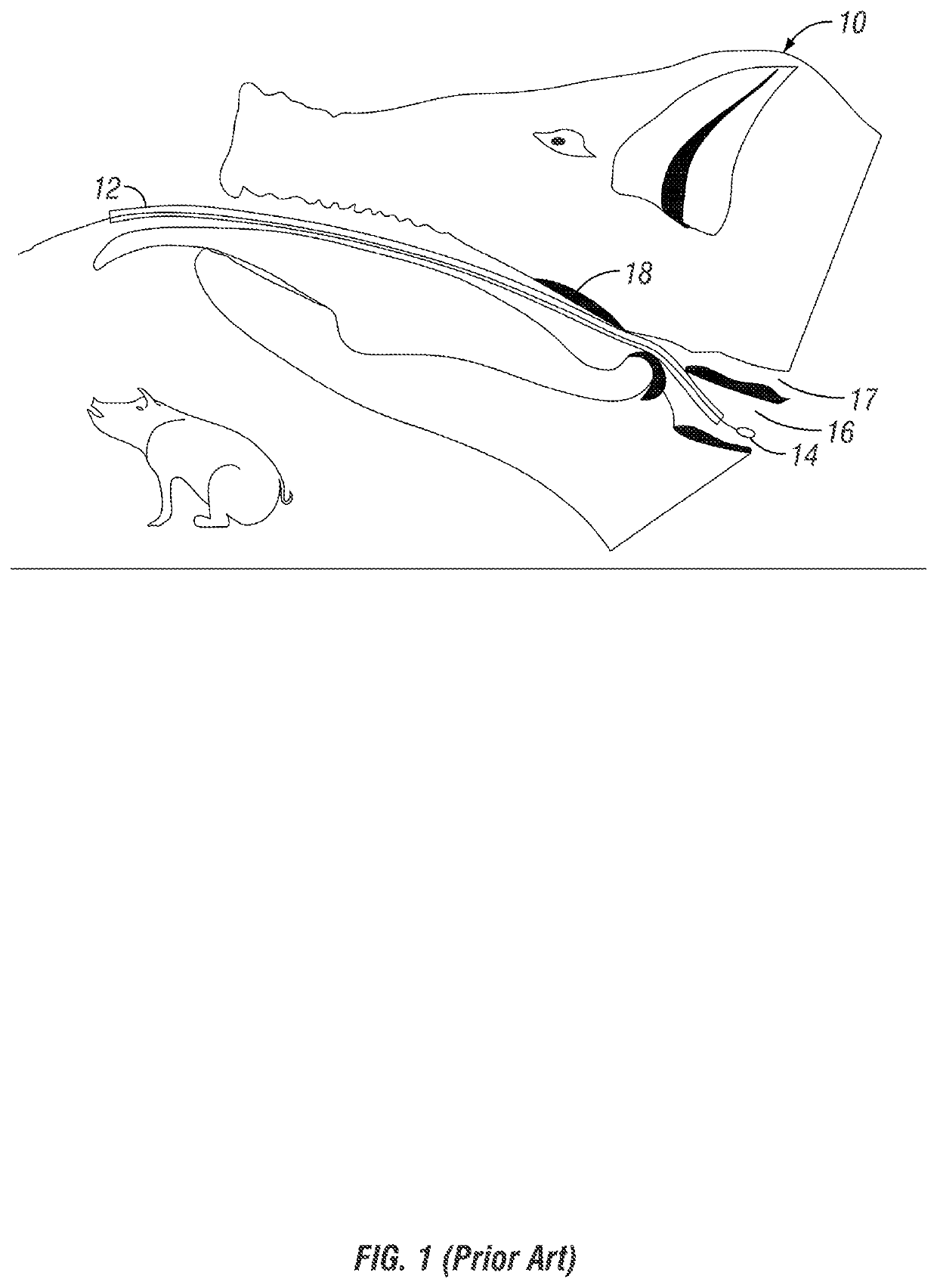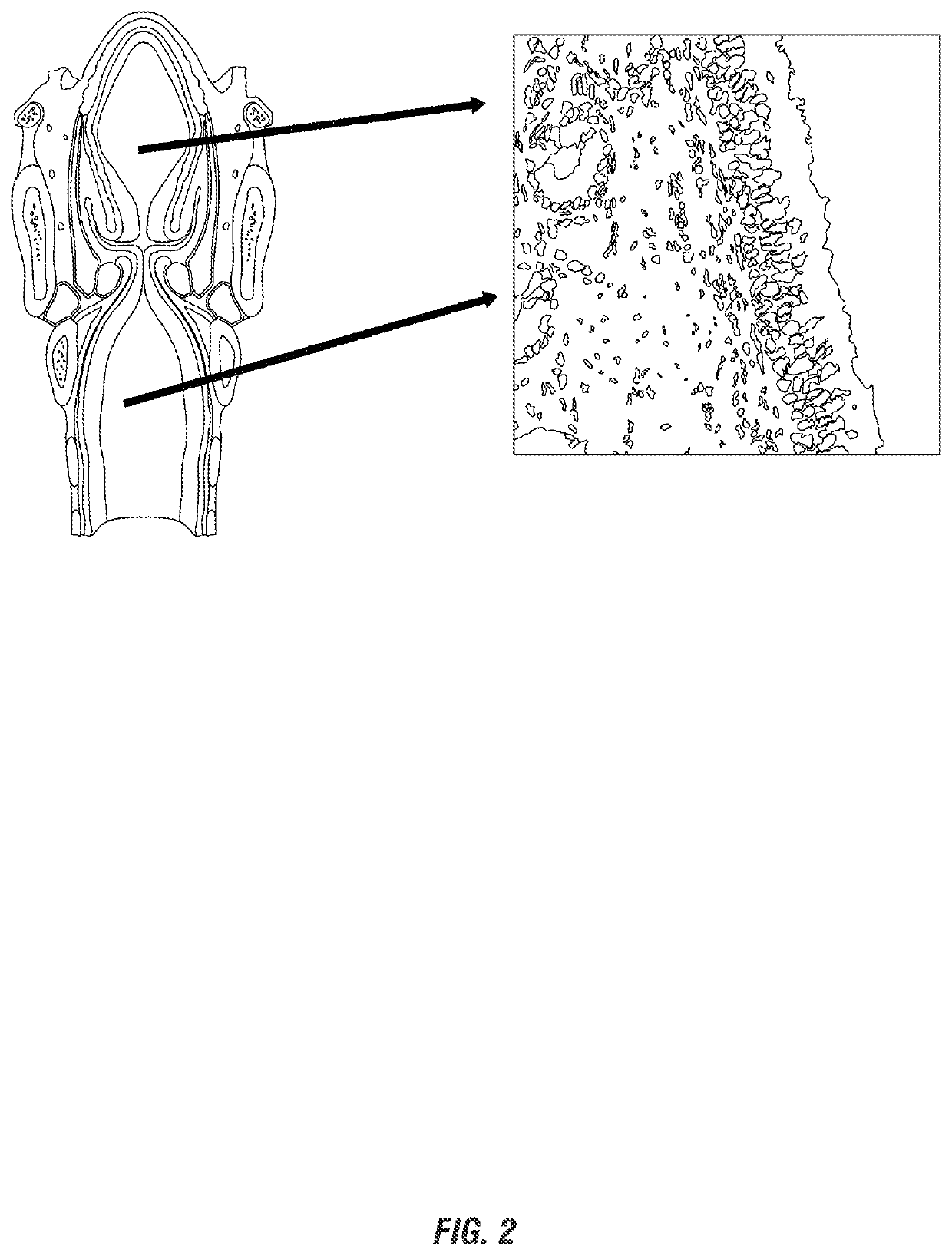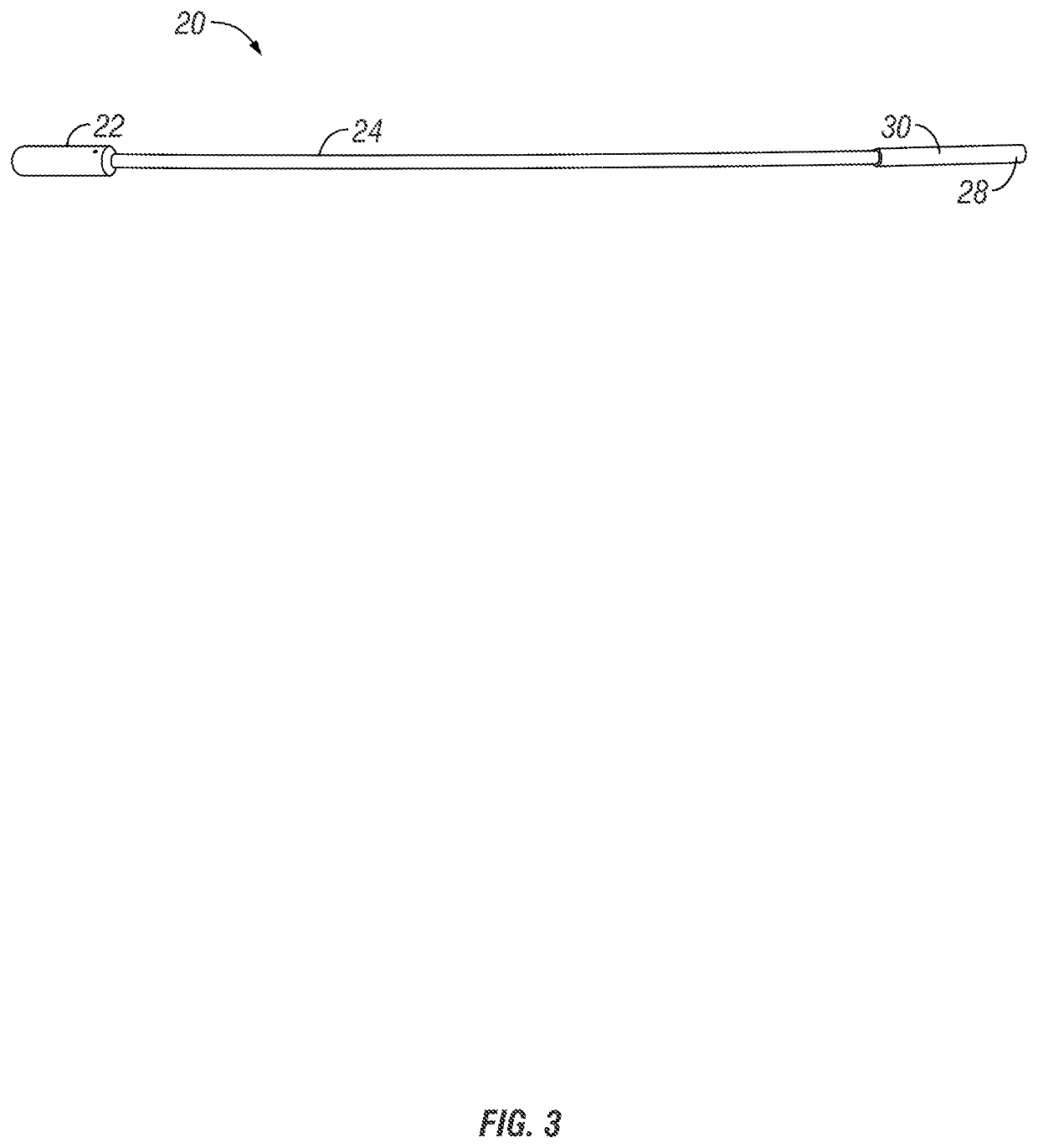Tracheo-bronchial sampling device
a tracheobronchial and sampling device technology, applied in the field of animal health testing, can solve the problems of mhp continuing to be a significant cause of respiratory disease, affecting the performance of mhp, and affecting the quality of life of pigs, so as to achieve safe, cost-effective, and convenient operation.
- Summary
- Abstract
- Description
- Claims
- Application Information
AI Technical Summary
Benefits of technology
Problems solved by technology
Method used
Image
Examples
example
[0084]To test the embodiment of the sampling device 20 shown in FIGS. 3 and 4, a side by side comparison was carried out using the traditional catheter (PCAI rod) and the sampling device 20 on pigs (n=24) experimentally inoculated with Mhp. In brief, the pigs were restrained with a snare and were subjected to two samplings; traditional catheter followed by the sampling device 20. The pig's mouth was held open with a mouth speculum and each device was inserted deeply into the trachea as the pig inspired, then rotated and moved up and down against the trachea. A total of 96 samples were collected at different time points (0, 8, 15, and 29 days post-inoculation). The sampling device 20 of the present disclosure was easy to use and practical. The handle 22 provided better grip on the device 20. Preliminary results showed nearly identical detection rates between devices, with a proportional agreement of 96.6% (see, e.g., FIG. 10). No statistical difference was observed between mean Ct va...
PUM
 Login to View More
Login to View More Abstract
Description
Claims
Application Information
 Login to View More
Login to View More - R&D
- Intellectual Property
- Life Sciences
- Materials
- Tech Scout
- Unparalleled Data Quality
- Higher Quality Content
- 60% Fewer Hallucinations
Browse by: Latest US Patents, China's latest patents, Technical Efficacy Thesaurus, Application Domain, Technology Topic, Popular Technical Reports.
© 2025 PatSnap. All rights reserved.Legal|Privacy policy|Modern Slavery Act Transparency Statement|Sitemap|About US| Contact US: help@patsnap.com



